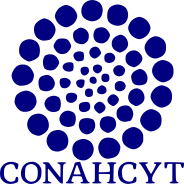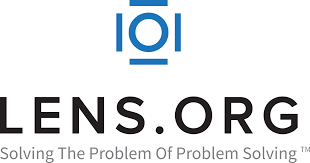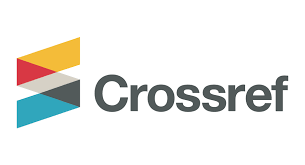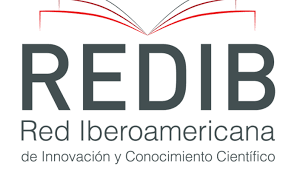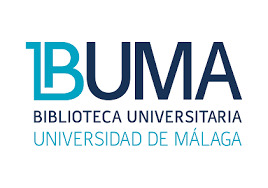Componentes antioxidantes y calidad nutricional de aguamiel de diversos cultivares de agave pulquero (Agave salmiana y A. mapisaga)
DOI:
https://doi.org/10.18387/polibotanica.59.18Palabras clave:
savia de agave, proteína, minerales, compuestos fenólicos, actividad antioxidante.Resumen
La savia del agave ha sido consumida por los mexicanos desde la época prehispánica como una bebida llamada “aguamiel”, actualmente su consumo ha disminuido por la preferencia de bebidas saborizadas, aunado al desconocimiento de las propiedades funcionales. Son pocos los estudios que refieren el valor nutricional y nutracéutico del aguamiel de diferentes cultivares de agave pulquero, pese a la gran variabilidad morfológica y grados de domesticación del género Agave. Por ello, el objetivo de la investigación fue evaluar las características físico-químicas, los componentes nutricionales y antioxidantes del aguamiel de diversos cultivares de A. salmiana y A. mapisaga, recolectados en los estados de Hidalgo y México, con el fin de identificar aquellos de mayor atributo nutracéutico y revalorizar su consumo. En promedio, los resultados mostraron que el aguamiel es fuente de azúcares (10.55 %), proteína (0.82 %), K (1829.78 mg L-1), Ca (159.70 mg L-1), Fe (19.17 mg L-1), Cu (5.12 mg L-1), vitamina C (323.17 mg EAA L-1) y compuestos fenólicos (325.66 mg EAG L-1). La capacidad antioxidante fue mayor en el aguamiel de A. salmiana del Estado de Hidalgo. El aguamiel de A. salmiana cultivar cerro, de color más oscuro (menor valor hue) y menor valor energético (30.07 kcal 100 mL-1), presentó la mayor actividad antioxidante (2576.29 mM ET L-1), lo que mostró una fuerte correlación con el alto contenido de proteína (1.20 %), Ca (409.97 mg L-1) y compuestos fenólicos (478.28 mg EAG L-1). En general, el aguamiel puede considerarse como bebida funcional por su calidad nutricional y contenido de componentes antioxidantes
Referencias
Almaraz-Abarca, N., Delgado-Alvarado, E. A., Ávila-Reyes, J. A., Uribe-Soto, J. N., & González-Valdez, L. S. (2013a). The Phenols of the Genus Agave (Agavaceae). Journal of Biomaterials and Nanobiotechnology, 04(03), 9–16. https://doi.org/10.4236/jbnb.2013.43A002
Almaraz-Abarca, N., González-Elizondo, M. D. S., Campos, M. D. G., Ávila-Sevilla, Z. E., Delgado-Alvarado, E. A., & Ávila-Reyes, J. A. (2013b). Variability of the Foliar Phenol Profiles of the Agave victoriae-reginae Complex (Agavaceae). Botanical Sciences, 91(3), 295–306. https://doi.org/10.17129/botsci.9
AOAC. (2005). Official Methods of Analysis. (18th Ed.). Association of Official Analytical Chemist.
Arvouet-Grand, A., Vennat, B., Pourrat, A., & Legret, P. (1994). [Standardization of propolis extract and identification of principal constituents]. Journal de pharmacie de Belgique, 49(6), 462–468.
Ávila Núñez, R., Rivas Pérez, B., & Chirinos, M. (2012). Contenido de azúcares totales, reductores y no reductores en Agave cocui Trelease. 12(2), 129–135.
Binaghi, M. J., Greco, C. B., López, L. B., Ronayne de Ferrer, P. A., & Valencia, M. E. (2008). Biodisponibilidad de hierro en la dieta infantil. Archivos argentinos de pediatría, 106(5), 387–389.
Brand-Williams, W., Cuvelier, M. E., & Berset, C. (1995). Use of a free radical method to evaluate antioxidant activity. LWT - Food Science and Technology, 28(1), 25–30. https://doi.org/10.1016/S0023-6438(95)80008-5
Brown, J. E. 2016. Nutrition: through the life cycle, 6ª edición. Minnesota, USA: Wadsworth, Cengage Learning. 610 p.
Burdurlu, H. S., Koca, N., & Karadeniz, F. (2006). Degradation of vitamin C in citrus juice concentrates during storage. Journal of Food Engineering, 74(2), 211–216. https://doi.org/10.1016/j.jfoodeng.2005.03.026
Carrillo-López, A., Silos-Espino, H., Flores-Benitez, S., Espinoza-Sánchez, E. A., Ornelas-Tavares, J. R., Flores-Chávez, L., Tovar-Robles, C., Méndez-Gallegos, J., & Rossel-Kipping, D. (2016). Some Evidences on Effect of Intake Aguamiel (Agave sap). Sustainable Agriculture Research, 5(1), 49. https://doi.org/10.5539/sar.v5n1p49
Castañeda-Ovando, A., Moreno-Vilet, L., Jaimez-Ordaz, J., Ramírez-Godínez, J., Pérez-Escalante, E., Cruz-Guerrero, A. E., Contreras-López, E., Alatorre-Santamaría, S. A., Guzmán-Rodríguez, F. J., & González-Olivares, L. G. (2023). Aguamiel syrup as a technological diversification product: Composition, bioactivity and present panorama. Future Foods, 8, 100249. https://doi.org/10.1016/j.fufo.2023.100249
Contreras-López, E., Félix-Reyes, N. L., González-Olivares, L. G., Jaimez-Ordaz, J., Castañeda-Ovando, A., Añorve-Morga, J., López-Hernández, B. A., Vélez-Rivera, N., & Ramírez-Godínez, J. (2023). Aguamiel Enhance Proteolytic Activity and Survival of Lactiplantibacillus pentosus ABHEAU-05 during Refrigerated Storage of a Fermented Milk. Fermentation, 9(9), 841. https://doi.org/10.3390/fermentation9090841
Del Caro, A., Piga, A., Vacca, V., & Agabbio, M. (2004). Changes of flavonoids, vitamin C and antioxidant capacity in minimally processed citrus segments and juices during storage. Food Chemistry, 84(1), 99–105. https://doi.org/10.1016/S0308-8146(03)00180-8
Escalante, A., Giles-Gómez, M., Flores, G., Acuña, V., Moreno-Terrazas, R., López-Munguía, A., & Lappe-Oliveras, P. (2012). Pulque Fermentation. En Y. Hui & E. Evranuz, Handbook of Plant-Based Fermented Food and Beverage Technology, Second Edition (pp. 691–706). CRC Press. https://doi.org/10.1201/b12055-50
Heldman, D. R., Lund, D. B., & Sabliov, C. M. (2018). Handbook of Food Engineering (D. R. Heldman, D. B. Lund, & C. Sabliov, Eds.; 3a ed.). CRC Press. https://doi.org/10.1201/9780429449734
Iriti, M., & Faoro, F. (2006). Grape phytochemicals: A bouquet of old and new nutraceuticals for human health. Medical Hypotheses, 67(4), 833–838. https://doi.org/10.1016/j.mehy.2006.03.049
Joaquín-Cruz, E., Dueñas, M., García-Cruz, L., Salinas-Moreno, Y., Santos-Buelga, C., & García-Salinas, C. (2015). Anthocyanin and phenolic characterization, chemical composition and antioxidant activity of chagalapoli (Ardisia compressa K.) fruit: A tropical source of natural pigments. Food Research International, 70, 151–157. https://doi.org/10.1016/j.foodres.2015.01.033
Lappe-Oliveras, P., Moreno-Terrazas, R., Arrizón-Gaviño, J., Herrera-Suárez, T., García-Mendoza, A., & Gschaedler-Mathis, A. (2008). Yeasts associated with the production of Mexican alcoholic nondistilled and distilled Agave beverages. FEMS Yeast Research, 8(7), 1037–1052. https://doi.org/10.1111/j.1567-1364.2008.00430.x
Li, A.-N., Li, S., Zhang, Y.-J., Xu, X.-R., Chen, Y.-M., & Li, H.-B. (2014). Resources and Biological Activities of Natural Polyphenols. Nutrients, 6(12), Article 12. https://doi.org/10.3390/nu6126020
McGuire, R. G. (1992). Reporting of Objective Color Measurements. HortScience, 27(12), 1254–1255. https://doi.org/10.21273/HORTSCI.27.12.1254
Mente, A., O’Donnell, M., & Yusuf, S. (2021). Sodium Intake and Health: What Should We Recommend Based on the Current Evidence? Nutrients, 13(9), 3232. https://doi.org/10.3390/nu13093232
Mora-López, J. L., Reyes-Agüero, J. A., Flores-Flores, J. L., Peña-Valdivia, C. B., & Aguirre-Rivera, J. R. (2011). Variación morfológica y humanización de la sección salmianae del género Agave.
Narváez Suárez, A. U., Martínez Saldaña, T., & Jiménez-Velázquez, M. (2016). El cultivo de maguey pulquero: Opción para el desarrollo de comunidades rurales del altiplano mexicano. Revista de Geografía Agrícola, 56, 33–44. https://doi.org/10.5154/r.rga.2016.56.005
Ngadze, E., Coutinho, T. A., Icishahayo, D., & Van Der Waals, J. E. (2014). Effect of calcium soil amendments on phenolic compounds and soft rot resistance in potato tubers. Crop Protection, 62, 40–45. https://doi.org/10.1016/j.cropro.2014.04.009
Ortiz-Basurto, R. I., Pourcelly, G., Doco, T., Williams, P., Dornier, M., & Belleville, M.-P. (2008). Analysis of the Main Components of the Aguamiel Produced by the Maguey-Pulquero (Agave mapisaga) throughout the Harvest Period. Journal of Agricultural and Food Chemistry, 56(10), 3682–3687. https://doi.org/10.1021/jf072767h
Perkin-Elmer Corporation. (1996). Analytical Methods for Atomic Absorption Spectroscopy (The Perkin-Elmer Corporation). http://www1.lasalle.edu/~prushan/Intrumental%20Analysis_files/AA-Perkin%20Elmer%20guide%20to%20all!.pdf
Pohl, P. (2009). Determination of metal content in honey by atomic absorption and emission spectrometries. TrAC Trends in Analytical Chemistry, 28(1), 117–128. https://doi.org/10.1016/j.trac.2008.09.015
Rappoport, Z. 2003. The Chemistry of Phenols (Vol. 1). New York: Wiley An Interscience publications.
Rivera, J. A., Muñoz-Hernández, O., Rosas-Peralta, M., Aguilar-Salinas, C. A., Popkin, B. M., & Willett, W. C. (2008). Consumo de bebidas para una vida saludable: Recomendaciones para la población mexicana. Salud Pública de México, 50(2), 173–195. https://doi.org/10.1590/S0036-36342008000200011
Santos-Zea, L., Leal-Diaz, A., Cortes-Ceballos, E., & Gutierrez- Uribe, J. (2012). Agave (Agave spp.) and its Traditional Products as a Source of Bioactive Compounds. Current Bioactive Compounds, 8(3), 218–231. https://doi.org/10.2174/157340712802762410
Silos-Espino, H.; Tovar-Robles, C. L.; González-Cortés, N.; Méndez-Gallegos, S.; Rossel-Kipping, D. 2011. Estudio integral del maguey (Agave salmiana): propagacion y valor nutricional. Revista Salud Pública y Nutrición, Edición especial (5): 75-82.
Singleton, V. L., & Rossi, J. A. (1965). Colorimetry of Total Phenolics with Phosphomolybdic-Phosphotungstic Acid Reagents. American Journal of Enology and Viticulture, 16(3), 144–158. https://doi.org/10.5344/ajev.1965.16.3.144
Sohaimy, S. A. E. (2012). Functional Foods and Nutraceuticals-Modern Approach to Food Science.
Soydinç, S., Çelik, A., Demiryürek, S., Davutoğlu, V., Tarakçıoğlu, M., & Aksoy, M. (2007). The relationship between oxidative stress, nitric oxide, and coronary artery disease. Electronic Journal of General Medicine, 4(2), 62–66. https://doi.org/10.29333/ejgm/82487
Tovar-Robles, C. L., Perales-Segovia, C., Cedillo, A. N., Valera-Montero, L. L., Gómez-Leyva, J. F., Guevara-Lara, F., Hernández-Duque, J. L. M., & Silos-Espino, H. (2011). Effect of aguamiel (agave sap) on hematic biometry in rabbits and its antioxidant activity determination. Italian Journal of Animal Science, 10(2), e21. https://doi.org/10.4081/ijas.2011.e21
Valdivieso Solís, D. G., Vargas Escamilla, C. A., Mondragón Contreras, N., Galván Valle, G. A., Gilés-Gómez, M., Bolívar, F., & Escalante, A. (2021). Sustainable Production of Pulque and Maguey in Mexico: Current Situation and Perspectives. Frontiers in Sustainable Food Systems, 5, 678168. https://doi.org/10.3389/fsufs.2021.678168
Villarreal-Morales, S. L., Muñiz-Márquez, D. B., Michel-Michel, M., González-Montemayor, Á.-M., Escobedo-García, S., Salas-Tovar, J. A., Flores-Gallegos, A. C., & Rodríguez-Herrera, R. (2019). Aguamiel a Fresh Beverage from Agave spp. Sap with Functional Properties. En Natural Beverages (pp. 179–208). Elsevier. https://doi.org/10.1016/B978-0-12-816689-5.00007-9
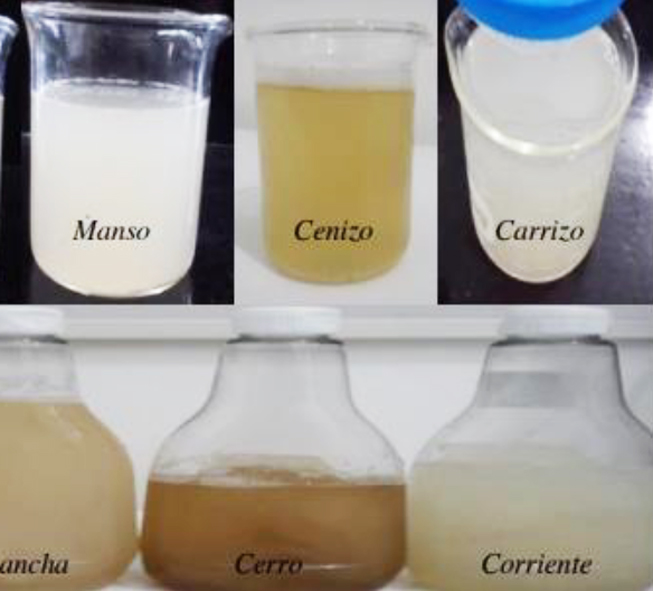
Descargas
Publicado
Número
Sección
Categorías
Licencia

Polibotánica por Departamento de Botánica de la Escuela Nacional de Ciencias Biológicas del Instituto Politécnico Nacional se distribuye bajo una Licencia Creative Commons Atribución-NoComercial-CompartirIgual 4.0 Internacional.


